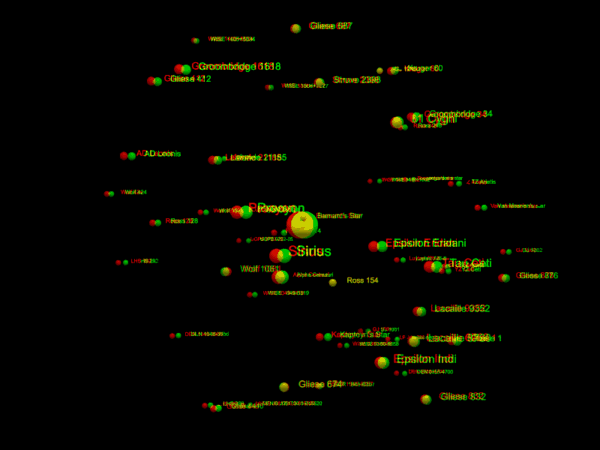Translational symmetry is a property of a system or object that remains unchanged when it is shifted or translated in space by a certain distance in a specific direction. In other words, if you can move the entire system a certain distance and it still looks the same, then it has translational symmetry. This concept is commonly observed in various fields such as physics, mathematics, and art.
Generative semantics is a theoretical framework in the field of linguistics that emerged in the 1970s, primarily associated with the work of scholars such as Barbara Partee, Richard Montague, and others. This approach focuses on the relationship between syntax (the structure of sentences) and semantics (the meaning of sentences) in language. It posits that the meaning of a sentence can be generated directly from its syntactic structure through a set of rules and principles.
"Tendril perversion" is not a widely recognized term in scientific, medical, or popular literature. However, in a specific context, particularly in literature or discussions of biology or botany, it could refer to an abnormality or deviation in the growth or development of tendrils—those slender, coiling structures that many climbing plants use to support themselves.
Syntactic relationships refer to the connections and interactions between words and phrases within a sentence based on the rules of syntax, which is the study of how words combine to form grammatically correct sentences. These relationships dictate how words function and relate to one another within a sentence structure.
One of the brightest natural objects in the sky, and by far the brightest not in the Milky Way! This is partly because it is relatively close to us.
It is so close that we can notice its proper motion, and its distance to us will vary significantly across a few tens of thousands of years!
Some notable ones:
Capable of evil like any other country, and somewhat merciless to its poor and overly egocentric, but not nearly as evil as any dictatorship.
Has the huge advantage of being one large country which speaks English.
Countries of the world have only two choices as of 2019: either rally behind the US and support democracy, or rally behind China and support dictatorship. The choice is up to you, voters. The more you deal with China, the more you lose your democracy and freedom. All dictatorships have no doubt that they must stick together.
And Americans, please stop that America Number 1 bullshit. Obviously everyone has to strive to be the best, so when you say it like that, it sounds like "even if at the expense of everyone else". The motto has to be "democracy number 1" or else you will scare off all allies. If all other countries sell out to China, you are fucked.
Pinned article: Introduction to the OurBigBook Project
Welcome to the OurBigBook Project! Our goal is to create the perfect publishing platform for STEM subjects, and get university-level students to write the best free STEM tutorials ever.
Everyone is welcome to create an account and play with the site: ourbigbook.com/go/register. We belive that students themselves can write amazing tutorials, but teachers are welcome too. You can write about anything you want, it doesn't have to be STEM or even educational. Silly test content is very welcome and you won't be penalized in any way. Just keep it legal!
Intro to OurBigBook
. Source. We have two killer features:
- topics: topics group articles by different users with the same title, e.g. here is the topic for the "Fundamental Theorem of Calculus" ourbigbook.com/go/topic/fundamental-theorem-of-calculusArticles of different users are sorted by upvote within each article page. This feature is a bit like:
- a Wikipedia where each user can have their own version of each article
- a Q&A website like Stack Overflow, where multiple people can give their views on a given topic, and the best ones are sorted by upvote. Except you don't need to wait for someone to ask first, and any topic goes, no matter how narrow or broad
This feature makes it possible for readers to find better explanations of any topic created by other writers. And it allows writers to create an explanation in a place that readers might actually find it.Figure 1. Screenshot of the "Derivative" topic page. View it live at: ourbigbook.com/go/topic/derivativeVideo 2. OurBigBook Web topics demo. Source. - local editing: you can store all your personal knowledge base content locally in a plaintext markup format that can be edited locally and published either:This way you can be sure that even if OurBigBook.com were to go down one day (which we have no plans to do as it is quite cheap to host!), your content will still be perfectly readable as a static site.
- to OurBigBook.com to get awesome multi-user features like topics and likes
- as HTML files to a static website, which you can host yourself for free on many external providers like GitHub Pages, and remain in full control
Figure 3. Visual Studio Code extension installation.Figure 4. Visual Studio Code extension tree navigation.Figure 5. Web editor. You can also edit articles on the Web editor without installing anything locally.Video 3. Edit locally and publish demo. Source. This shows editing OurBigBook Markup and publishing it using the Visual Studio Code extension.Video 4. OurBigBook Visual Studio Code extension editing and navigation demo. Source. - Infinitely deep tables of contents:
All our software is open source and hosted at: github.com/ourbigbook/ourbigbook
Further documentation can be found at: docs.ourbigbook.com
Feel free to reach our to us for any help or suggestions: docs.ourbigbook.com/#contact







